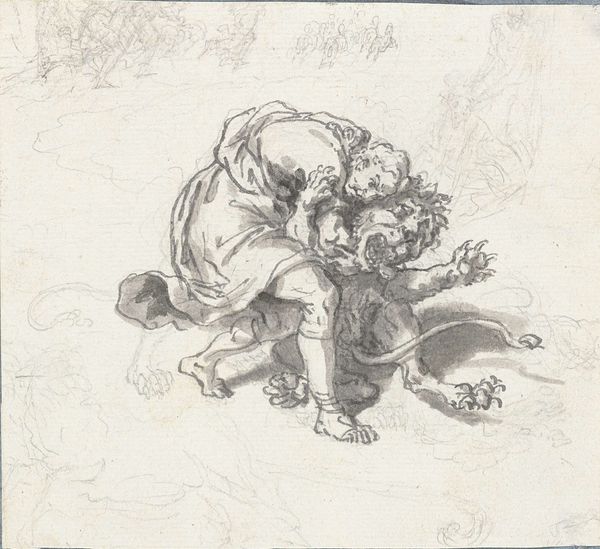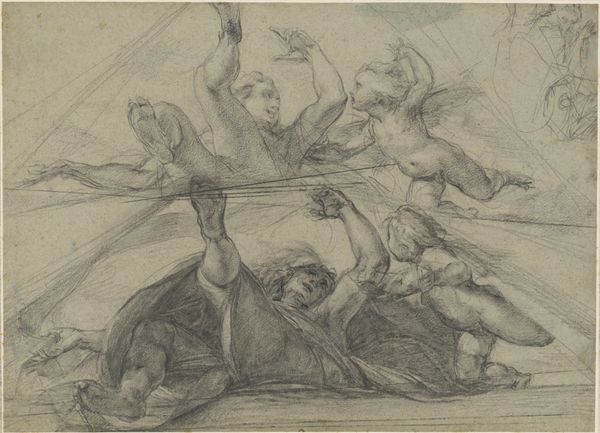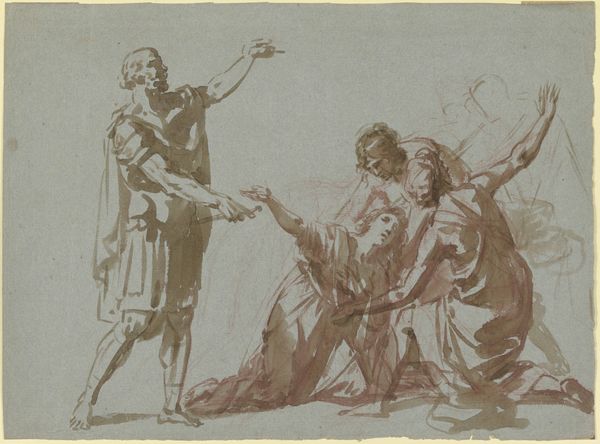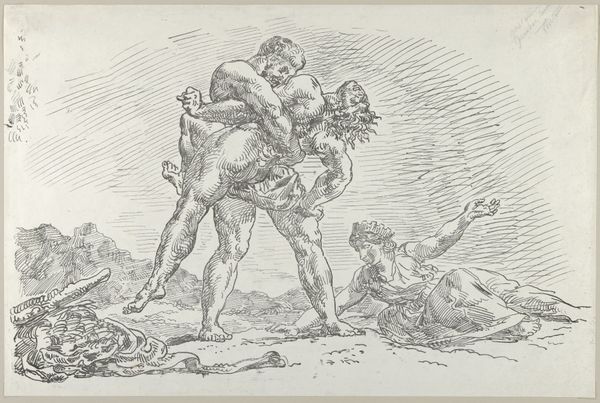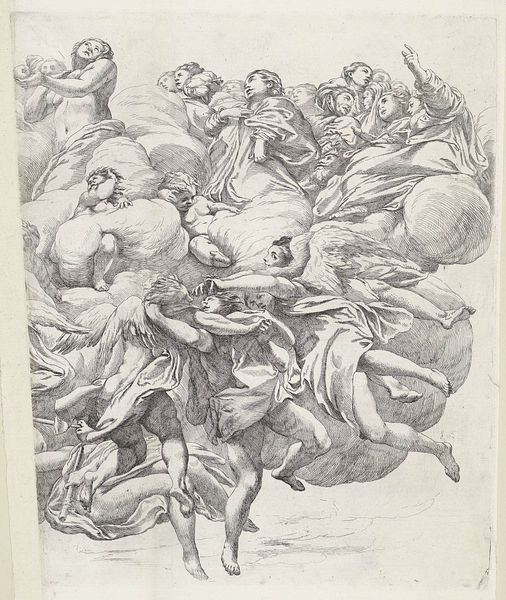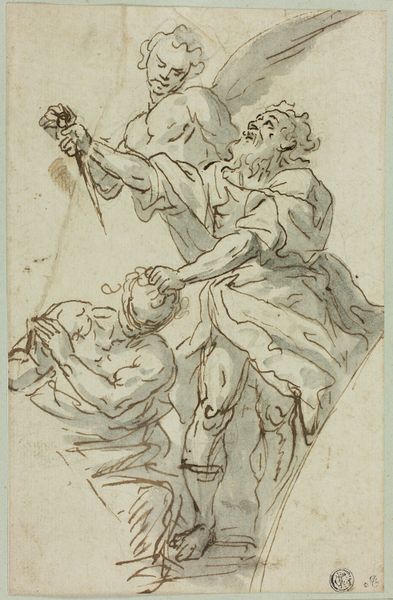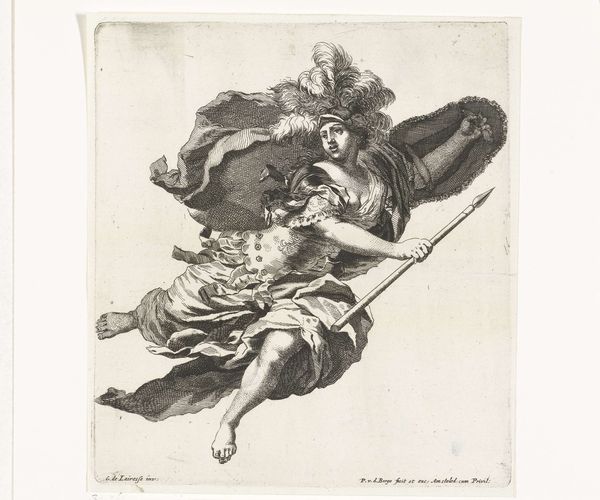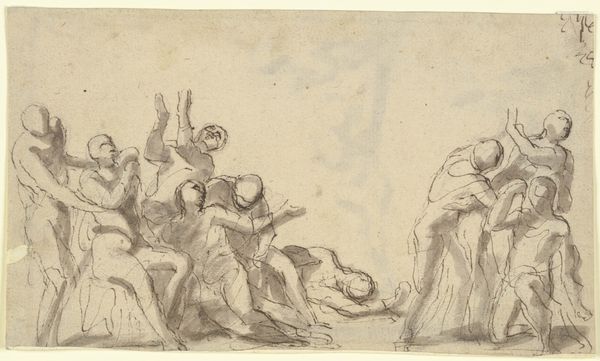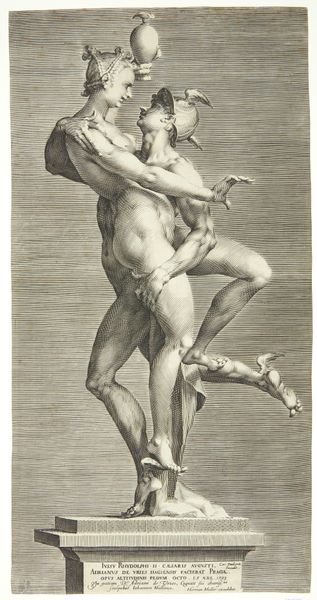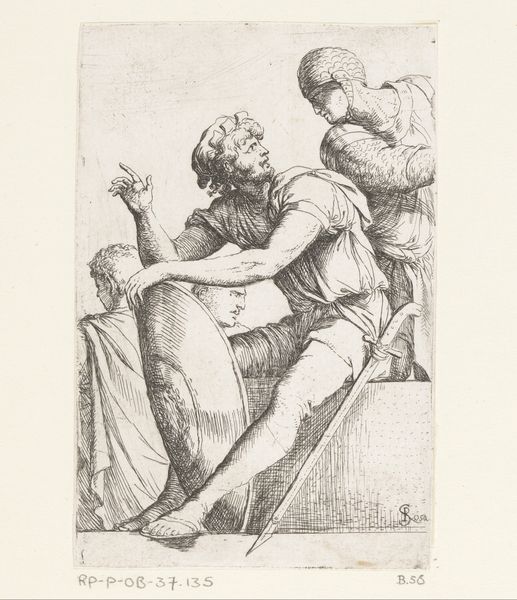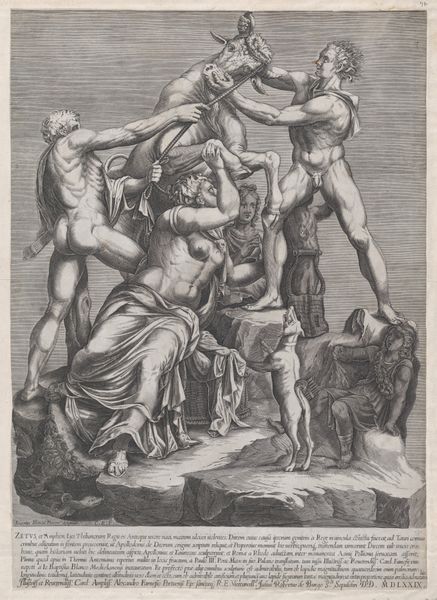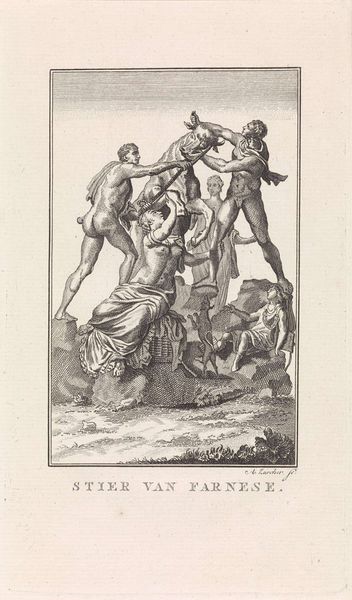
drawing
#
drawing
#
imaginative character sketch
#
light pencil work
#
quirky sketch
#
allegory
#
pencil sketch
#
figuration
#
personal sketchbook
#
idea generation sketch
#
sketchwork
#
line
#
sketchbook drawing
#
history-painting
#
sketchbook art
#
fantasy sketch
Dimensions: sheet: 22.8 x 19.1 cm (9 x 7 1/2 in.)
Copyright: National Gallery of Art: CC0 1.0
Curator: This drawing is titled "Death Stalking a Woman," by Carl Gotthard Langhans. Editor: Wow, that’s a stark image. The dynamism of the lines creates this real sense of urgency and horror, the woman reaching out while that figure… Death, I presume? looms. It gives me the chills! Curator: Langhans was an architect, notably designing the Brandenburg Gate in Berlin. This drawing, seemingly a preliminary sketch, hints at larger narratives prevalent during his time. I would venture this is the depiction of the allegorical triumph of death. The seated woman looks defeated already, with her cherub/child on the floor. Editor: Absolutely. Seeing Death depicted here with what appears to be an arrow really plays into that established historical fear around death itself, a kind of menacing hunter about to strike, rather than a peaceful acceptance. Considering the Enlightenment ideals of the time, the anxiety around mortality is so apparent in art, especially concerning the social and personal impacts. The woman doesn't look terrified exactly but...resigned, maybe? The horror feels internal. Curator: Yes, I believe there's a socio-political dimension at play too. Death, here personified, serves to level the social playing field. Whether one is a wealthy patron or a struggling artisan, mortality is the great equalizer. Artists captured the zeitgeist of a time when hierarchies were beginning to be questioned, when discussions around the human experience itself came to the foreground. The act of capturing it, drawing it in this intimate scale, reflects on personal anxiety of death itself and as a social disruptor. Editor: That resonates powerfully, even now. The scale adds to it, doesn't it? A private, internalized terror externalized on paper. One can wonder about the role gender plays into the artwork: Is the depiction of woman here meant to play on vulnerability, or another symbol altogether, or even a bit of both? Curator: Precisely. We can examine how female vulnerability and resilience were framed at the time. Was Langhans questioning such depictions or reinforcing them? And what underlying message about fate and individual agency might have wanted to reflect through this personal artwork. Editor: This makes the drawing much more unsettling and more complicated, so that we think less about a scary ghoul and consider who she's pointing to, and *why.* Thanks for opening up how we might interpret the work! Curator: Indeed, art invites us to consider not just what is seen, but the forces that shape what we see, and who benefits from how we perceive. Thank you.
Comments
No comments
Be the first to comment and join the conversation on the ultimate creative platform.
